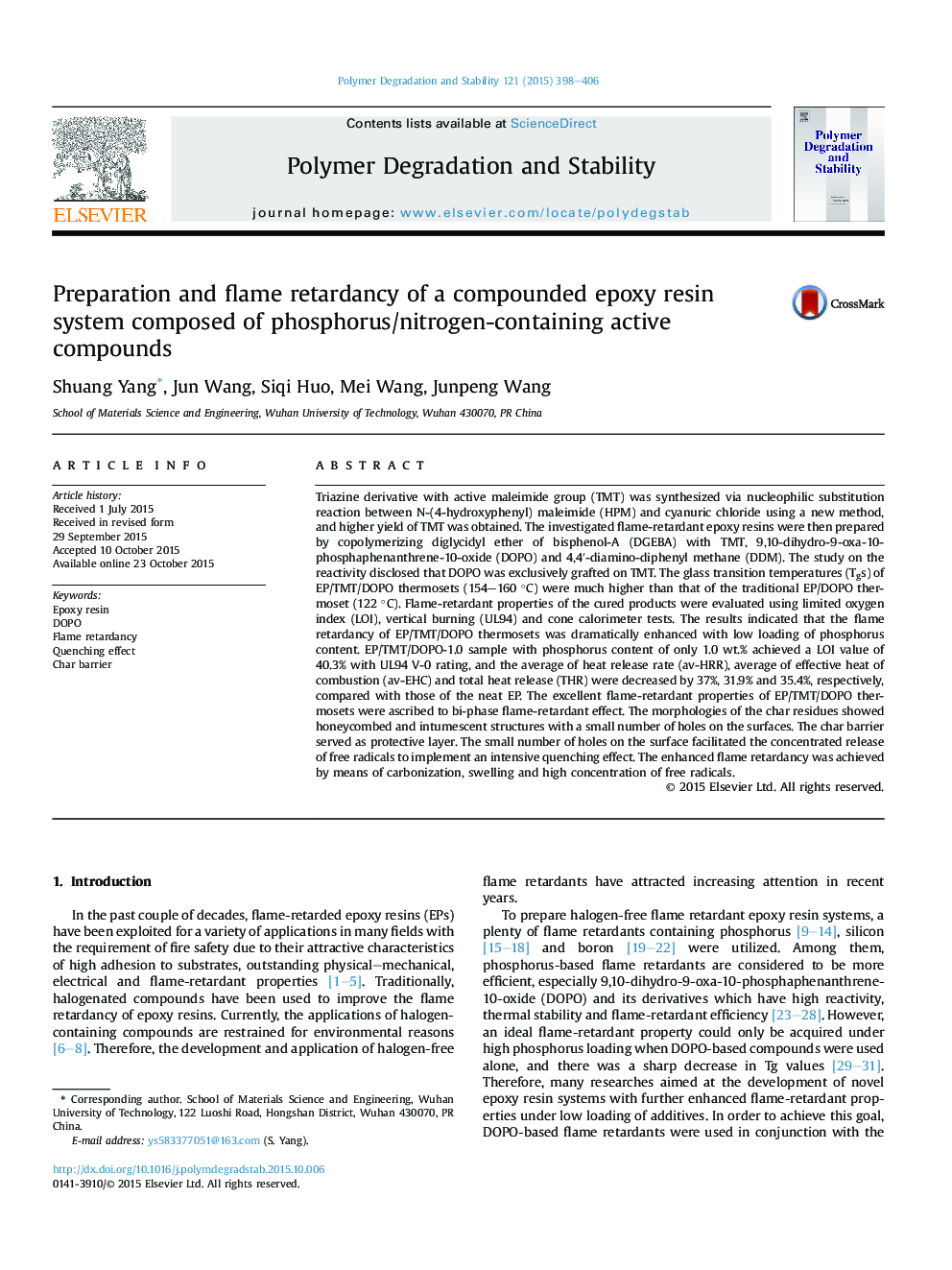| Article ID | Journal | Published Year | Pages | File Type |
|---|---|---|---|---|
| 5201402 | Polymer Degradation and Stability | 2015 | 9 Pages |
Abstract
Triazine derivative with active maleimide group (TMT) was synthesized via nucleophilic substitution reaction between N-(4-hydroxyphenyl) maleimide (HPM) and cyanuric chloride using a new method, and higher yield of TMT was obtained. The investigated flame-retardant epoxy resins were then prepared by copolymerizing diglycidyl ether of bisphenol-A (DGEBA) with TMT, 9,10-dihydro-9-oxa-10-phosphaphenanthrene-10-oxide (DOPO) and 4,4ʹ-diamino-diphenyl methane (DDM). The study on the reactivity disclosed that DOPO was exclusively grafted on TMT. The glass transition temperatures (Tgs) of EP/TMT/DOPO thermosets (154-160 °C) were much higher than that of the traditional EP/DOPO thermoset (122 °C). Flame-retardant properties of the cured products were evaluated using limited oxygen index (LOI), vertical burning (UL94) and cone calorimeter tests. The results indicated that the flame retardancy of EP/TMT/DOPO thermosets was dramatically enhanced with low loading of phosphorus content. EP/TMT/DOPO-1.0 sample with phosphorus content of only 1.0 wt.% achieved a LOI value of 40.3% with UL94 V-0 rating, and the average of heat release rate (av-HRR), average of effective heat of combustion (av-EHC) and total heat release (THR) were decreased by 37%, 31.9% and 35.4%, respectively, compared with those of the neat EP. The excellent flame-retardant properties of EP/TMT/DOPO thermosets were ascribed to bi-phase flame-retardant effect. The morphologies of the char residues showed honeycombed and intumescent structures with a small number of holes on the surfaces. The char barrier served as protective layer. The small number of holes on the surface facilitated the concentrated release of free radicals to implement an intensive quenching effect. The enhanced flame retardancy was achieved by means of carbonization, swelling and high concentration of free radicals.
Related Topics
Physical Sciences and Engineering
Chemistry
Organic Chemistry
Authors
Shuang Yang, Jun Wang, Siqi Huo, Mei Wang, Junpeng Wang,
